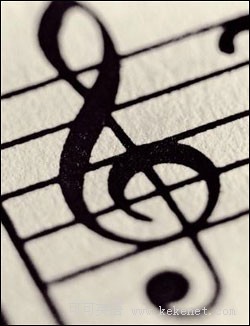
The Language of Music
A painter hangs his or her finished picture on a wall, and everyone can see it. A composer writes a work, but no one
can hear it until it is performed. Professional singers and players have great responsibilities, for the composer is utterly
dependent on them. A student of music needs as long and as arduous a training to become a performer as a medical
student needs to become a doctor. Most training is concerned with technique, for musicians have to have the muscular
proficiency of an athlete or a ballet dancer. Singers practice breathing every day, as their vocal chords would be
inadequate without controlled muscular support. String players practice moving the fingers of the left hand up and down,
while drawing the bow and to and fro with the right arm – two entirely different movements. Singers and instrumentalists
have to be able to get every not perfectly in tune. Pianists are spared this particular anxiety, for the notes are already
there, waiting for them, and it is the piano tuner's responsibility to tune the instrument for them. But they have their own
difficulties: the hammers that hit the strings have to be coaxed not to sound like percussion, and each overlapping tone
has to sound clear. This problem of getting clear texture is one that confronts student conductors: they have to learn to
know every note of the music and how it should sound, and they have to aim at controlling these sounds with musical
knowledge and understanding. Great artists are those who are so thoroughly at home in the language of music that they
can enjoy performing works written in any century.












